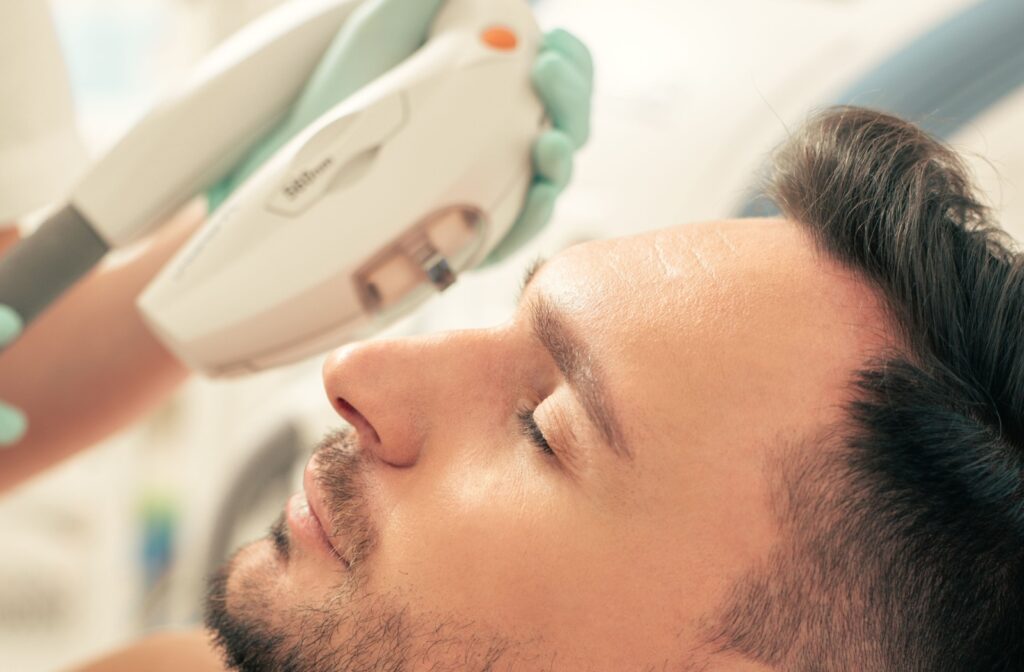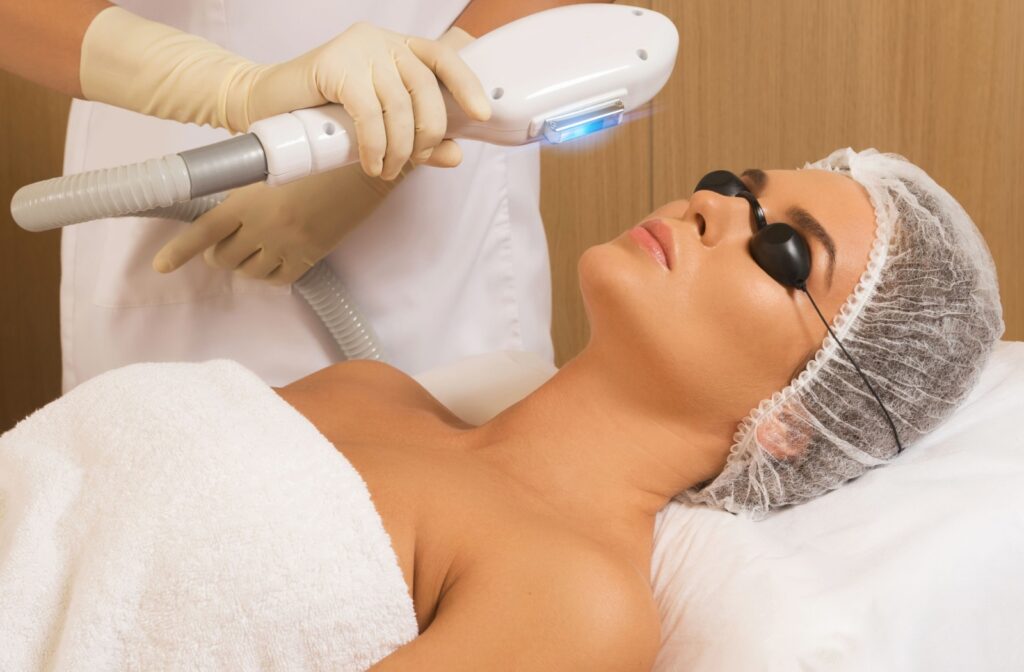If you’ve been struggling with burning, stinging, watery, or gritty eyes, you may be one of the millions living with dry eye disease. And while over-the-counter drops might offer some temporary relief, they rarely address what’s causing the problem. For many people, the issue starts with blocked oil glands, and that’s where Intense Pulsed Light (IPL) therapy comes in.
This light-based, non-invasive treatment has quickly become a trusted in-office option for managing chronic dry eye. It’s safe, comfortable, and targets the source of the condition—rather than just masking the symptoms.
What Is IPL for Dry Eye, and Why Might You Need It?
IPL therapy uses precise pulses of broad-spectrum light to treat inflammation and improve the function of the Meibomian glands – tiny oil-secreting glands located along the edges of your eyelids. These glands are responsible for releasing the oil that forms the outer layer of your tear film, which helps prevent your tears from evaporating too quickly.
When these glands become blocked or inflamed, a condition known as Meibomian Gland Dysfunction (MGD), the quality of your tears declines. This can result in dry, irritated, and watery eyes—classic signs of evaporative dry eye disease.
IPL therapy is often recommended for patients with:
- Chronic dry eye symptoms
- Diagnosed MGD
- Inflammation or redness along the eyelid margins
- Skin conditions like rosacea that contribute to dry eye
- Little to no relief from artificial tears, compresses, or lid scrubs
What Are the Benefits of IPL?
IPL doesn’t just soothe your eyes—it works to restore healthier tear function and reduce the root causes of irritation. Benefits may include:
- Reduced inflammation in the eyelids and surrounding skin
- Improved Meibomian gland performance and oil flow
- More stable tear film, leading to fewer symptoms
- Fewer flare-ups and reduced dependence on eye drops
- Long-term symptom control with regular maintenance treatments
For some, IPL can also improve skin tone and reduce redness around the eyes, especially in patients with rosacea.

What to Expect During IPL Treatment
IPL treatment for dry eye is simple, fast, and well-tolerated by most patients. Each session typically lasts about 15–20 minutes and is performed right in your optometrist’s office.
Before the Procedure
Your eye care provider will begin with a dry eye assessment, including tear break-up time, Meibomian gland imaging, and a review of your symptoms. If IPL is a good fit, your first appointment can be scheduled promptly.
During the Procedure
- A cooling gel is applied to the skin under your eyes
- Protective shields are placed over your eyes for safety
- The IPL device is moved gently over the treatment area, delivering a series of light pulses to the lower eyelid and surrounding skin
- Some patients describe the sensation as a quick snap or warmth—mild but noticeable
After the light pulses, the optometrist may manually express your Meibomian glands to help release any stagnant oils.
After the Procedure
There’s no downtime, but your skin may appear slightly flushed or feel warm for a few hours. Many patients return to their normal routine the same day. Sunscreen is advised if you’ll be outdoors, as your skin may be more sensitive to sunlight.
Common Questions About IPL
How Many IPL Sessions Are Needed?
IPL is not a one-and-done treatment. Most patients benefit from a series of 3–4 sessions, spaced about 2–4 weeks apart. Results tend to build with each treatment, and maintenance sessions may be recommended every 6–12 months to keep symptoms under control.
While some people notice improvements after the first or second treatment, the best results are typically seen after completing the full series.
Is IPL Right for You?
IPL works best for those with evaporative dry eye due to Meibomian Gland Dysfunction. It may not be suitable if your dry eye stems from an autoimmune condition or aqueous tear deficiency. Your optometrist will perform a full evaluation to determine whether IPL is the right fit for your eyes and skin type.
You may be a good candidate if:
- You’ve been diagnosed with MGD
- You experience frequent dry, irritated, or watery eyes
- You’ve tried other treatments without lasting relief
- You have skin inflammation or visible redness along your eyelids
- You prefer a drug-free, in-office solution
IPL is not typically recommended for individuals with certain skin types, photosensitivity, or those taking medications that increase light sensitivity. Your provider will review your medical history and skin tone to ensure safe treatment.
Managing Dry Eye in the Long Term
Dry eye is a chronic condition, which means there’s no permanent cure—but with the right treatment plan, it can be effectively managed.
In addition to IPL, your optometrist may recommend:
- Daily eyelid hygiene with a warm compress
- Omega-3 supplements to support gland health
- Prescription eye drops or eye masks if needed
- Environmental modifications (like using a humidifier)
- Regular follow-ups to monitor tear quality and symptom control
IPL is often used in combination with these strategies to provide the best possible outcomes.
Personalized Dry Eye Care in Winnipeg
If you’re tired of dry eyes interfering with your daily life, it might be time to try a treatment that targets the cause—not just the symptoms. IPL therapy offers a safe, effective, and non-invasive option for long-lasting relief.
At Village Optical, we provide personalized dry eye assessments and in-office treatments tailored to your individual needs. Our team in Winnipeg is committed to helping you achieve clearer, more comfortable vision—whether through IPL or a combination of approaches that work best for you. Book your consultation today to find out if IPL is right for you, and take the first step toward more comfortable, hydrated eyes.



